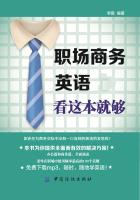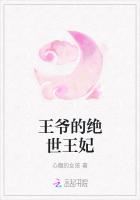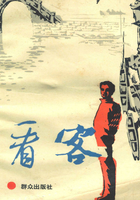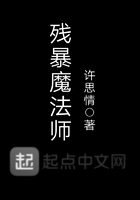Excellence is not difficult—simply decide right now to give it your best shot—and you will be amazed with what life gives you back.
变得卓越并不艰难——从现在开始尽自己最大能力去做——你会发现生活将给予你惊人的回报。
There is no shortcut to excellence. You will have to make the commitment to make excellence your priority. Use your talents, abilities, and skills in the best way possible and get ahead of others by giving that little extra.
成功没有捷径。你必须把卓越转变成你身上的一个特质。最大限度发挥你的天赋、才能、技巧,多付出一点。把其他所有人甩在你身后。
Bill Gates and Water Incident 比尔·盖茨和泼水事件
Spend time with the family of Bill Gates, and eventually someone will mention the water incident.
The future software mogul was a headstrong 12-year-old and was having a particularly nasty argument with his mother at the dinner table. Fed up, his father threw a glass of cold water in the boy's face.
“Thanks for the shower,” the young Mr. Gates snapped.
The incident lives in Gates family lore not just for its drama but also because it was a rare time that Bill Gates Sr., father of his famous namesake, lost his cool. The argument presaged a turning point in the life of a tempestuous boy that would set him on course to become the Bill Gates whom the public knows as co-founder of Microsoft Corp. and the world's richest man.
Behind the Bill Gates success story is the other William Gates. The senior Mr. Gates balanced a family thrown off kilter by a boy who appeared to gain the intellect of an adult almost overnight. He served as a quiet counsel as his son jumped into and thrived in the cutthroat business world. When huge wealth put new pressure on the son, the elder Gates stepped in to start what is now the world's largest private philanthropy.
Bill Gates Sr., 83 years old, is now co-chair of his son's $30 billion philanthropy, the Bill & Melinda Gates Foundation. He has avoided the spotlight. The public details of his life include little beyond his official biography at the foundation, which says he was a Seattle lawyer, World War II veteran, nonprofit volunteer and father of three. He has compiled his thoughts on life in a short book to be published next week.
In interviews with The Wall Street Journal, Bill Gates Sr., Bill Gates and their family shared many details of the family's story for the first time, including Bill Gates Jr.'s experience in counseling and how his early interest in computers came about partly as a result of a family crisis. The sometimes colliding forces of discipline and freedom within the clan shaped the entrepreneur's character.
The relationship between father and son entered a new phase when the software mogul began working full-time seven months ago at the Gates Foundation. For the past 13 years, the father has been the sole Gates family member with a daily presence at the foundation, starting it from the basement of his home and minding it while his son finished up his final decade running Microsoft.
At six-foot-six, Bill Gates Sr. is nearly a full head taller than his son. He's known to be more social than the younger Bill Gates, but they share a sharp intellect and a bluntness that can come across to some as curt. He isn't prone to introspection and he plays down his role in his son's life.
“As a father, I never imagined that the argumentative, young boy who grew up in my house, eating my food and using my name would be my future employer,” Mr. Gates Sr. told a group of nonprofit leaders in a 2005 speech. “But that's what happened.”
The first stage—argumentative young boy—“started about the time he was 11,” Mr. Gates Sr. says in one of a series of interviews. That's about when young Bill became an adult, says Bill Sr., and an increasing headache for the family.
Until that time, the Gates home had been peaceful. Bill Sr. and his wife, Mary, had three children: Kristi;then Bill, born in 1955; and Libby. It was a close family that thrived on competitions—board games, cards, ping-pong. And on rituals: Sunday dinners at the same time every week, and at Christmas, matching pajamas for every family member.
While very involved in his kids' lives, Mr. Gates Sr. was somewhat distant emotionally, which his children say probably reflects his generation. His stature, combined with a lawyerly bent for carefully choosing his words, also made him intimidating at times. “He'd come home and he'd sit in a chair and eat dinner, but there was never any kind of warm, give-me-a-hug kind of thing,”says Kristi Blake, his oldest daughter.
Mr. Gates Sr. left much of the day-to-day parenting to his wife while he was building his career at a Seattle law firm. Daughter of a Seattle banker, Ms. Gates had been an athlete and top student in high school and college, where she met Bill Sr.. She became a full-time volunteer and served on corporate boards.
Ms. Gates encouraged her kids to study hard, play sports and take music lessons (Bill Gates tried the trombone with little success). And she imparted a discipline that reflected her upbringing in a well-to-do family. She expected her kids to dress neatly, be punctual and socialize with the many adults who visited their home. For the most part, young Bill dutifully abided.
“She was the most engaged parent and she had high expectations of all of us,” says Libby Armintrout, Bill's younger sister. “Not just grades and that sort of thing, but how we behaved in public, how we would be socially.”
【名人小课堂】
比尔·盖茨(全名William Henry Gates,1955— ),美国微软公司董事长。1995年至2007年,连续13年蝉联福布斯全球富豪榜世界首富。2008年6月27日正式退出微软,并把580亿美元个人财产尽数捐给比尔和梅琳达·盖茨基金会。2012年3月,比尔盖茨以610亿美元位列福布斯全球富豪榜第二。
和比尔·盖茨一家共度时光,总会有人提到泼水事件。
那时,这个未来的软件巨头尚处于固执而叛逆的12岁,他在餐桌上和母亲大吵了一架。父亲大为光火,朝这男孩儿的脸上泼了一杯冷水。
“真是感谢你的淋浴。”年轻的盖茨先生怒声说道。
这次事件之所以能在盖茨的家族故事中传承下来,并非仅仅因为其戏剧性,同时还因为这是老比尔·盖茨——著名的小比尔的父亲——极少的一次盛怒。这次争吵预示着盖茨生命里的一个转折——这位身怀傲骨的男孩已经做好了准备,要成为世人眼中的微软创始人和世界首富比尔·盖茨。
在比尔·盖茨的成功故事背后,是另一名威廉·盖茨。家庭和睦被这个仿佛在一夜之间获得成人头脑的小盖茨打破,而老盖茨要来恢复原有的和谐。眼看儿子跳入凶险的商业战场,他作为一名无声的顾问,一直陪伴着他的成长。当巨额财富在儿子肩头放上了新的负担,老盖茨便开始着手启动现今世界上最大的私人慈善基金会。
如今,83岁的老比尔·盖茨在他儿子的那个总值300亿美元的基金会——比尔和梅琳达·盖茨基金会——担任联合主席。他为人处事甚为低调,有关他这一生的公开资料不外乎基金会的官方记录,也只提到他曾是一名西雅图的律师、二战老兵、慈善志愿人士、三个孩子的父亲。他已将自己对生活的思考编写成册,定于下周出版[1]。
在与《华尔街日报》的访谈中,两位比尔·盖茨和他们的家人一道,首次在公众面前披露家庭故事中的诸多细节,这包括小比尔·盖茨在法庭上的经历,以及他早年对电脑的兴趣有部分是源于一场家庭危机。在家庭约束和自由追求之间时而发生的碰撞,打磨出了这位事业家的性格。
自这位软件巨头于七个月前开始在盖茨基金会担任全职的那一刻起,父子俩的关系又翻开了新的篇章。因为在过去的13年里,父亲是盖茨家族中唯一一位每日出席基金会的成员,是他将它带出襁褓,并在儿子运营微软的最后一个十年里,为其费尽了心思。
6.6英尺的老比尔·盖茨几乎高出他儿子整整一个头。人们都说他比小比尔更擅于交际,但是,他们共有的直率和高智商一样显而易见,不过,这到了一些人眼中也就是唐突。要他自省并非易事,他还刻意把自己对儿子的影响一语带过。
“作为一名父亲,我从未想过这个吃我的食物、用我的姓名、在我的房子里长大的、争强好胜的年轻人,有一天竟会成为我的雇主,”在2005年的一场演讲中,老盖茨先生对一群慈善领袖说,“但一切就这么发生了。”
第一阶段——争强好胜的年轻人——“大约于11岁左右开始。”老盖茨先生在一次访谈中说道。就是在这个时候,小比尔长大了,老比尔说这是让家长越发头痛的事情。
在那之前,盖茨一家都处于宁静之中。老比尔和他的妻子玛丽养育着三个孩子:先是克里斯蒂,1955年有了比尔,最后是利比。这是一个靠比赛——棋牌和乒乓——维持生计的和睦家庭。还有一些家族仪式:每周例行的周日晚宴,圣诞晚宴,以及每位家庭成员必备的统一睡袍。
老盖茨先生在深入其儿女生活的同时,却在情感上保持着某种程度的冷漠,他的孩子们认为,这多半能反映出他这一代人的特质。他的身高,加之其律师式的谨慎措辞,让他总是显得有些吓人。“他回到家里,坐上椅子,开始吃饭,但却没有丝毫温暖可言,没有和我来个拥抱之类的意思。”他的大女儿克里斯蒂·布莱克如是说道。
老盖茨先生在西雅图律师事务所忙于开创事业,便把大量的抚育工作扔给了他的妻子。身为一位西雅图银行家的女儿,盖茨夫人在高中和大学都是运动健将,同时也是最优秀的学生,她与老比尔相识于大学校园。后来,她成为了一名全职志愿者,也曾在董事会任职。
盖茨夫人鼓励她的孩子们好好学习,勤做运动,并学习音乐课程(比尔·盖茨就学过长号,不过没出什么成绩)。她的教育方式也反映出她出身于富裕家庭的成长背景。她希望孩子们能穿戴整洁、遵守时间,并与来访的成年人聊天交流。就大多时候而言,小比尔还是谨遵教诲的。
“她是最尽职的家长,对我们每个人都抱有很高的期望,”比尔的妹妹利比·阿密特罗说,“这不仅限于成绩之类,还包括为人处事、社会交际。”
【比尔·盖茨——】
The world won't care about your self-esteem. The world will expect you to accomplish something before you feel good about yourself.
这世界并不会在意你的自尊。这世界指望你在自我感觉良好之前先要有所成就。
What the FBI Had on Steve Jobs FBI手中的乔布斯
You've heard about things going on your permanent record? Steve Jobs had one, too.
The Federal Bureau of Investigation on Thursday made public a background check on the Apple co-founder that took place in 1991. The agency assembled the investigation because Mr. Jobs was being considered for a presidential appointment by George H.W. Bush to the President's Export Council, which advises on international trade. Mr. Jobs was appointed to the position that year.
The Wall Street Journal/FINS.com requested the file through the Freedom of Information Act.
In the 191-page document, friends and associates describe him as profoundly talented, creative and hardworking. But his many faults are also acknowledged including the fact that he neglected his daughter for the first several years of his life and that his management techniques were considered by many to be abusive.
Two individuals, who were acquainted with Mr. Jobs, said he was “strong willed, stubborn, hardworking and driven, which they believe is why he is so successful.”
Another source said she was reluctant to discuss Mr. Jobs, because she had “questions concerning his ethics and morality”. The woman, who said that she and Jobs had “experimented” with drugs together in the past, also described him as “shallow and callous”. His success as head of Apple, she said, had given him an “enormous amount of power” and “caused him to distort the truth at times to get his way”. Despite this, she recommended him for the government position.
A Palo Alto, Calif.—based man who identifies himself as a former “good friend” of Mr. Jobs said that while he was “basically an honest and trustworthy person, he is a very complex individual and his moral character is suspect”. Mr. Jobs “alienated a large number of people at Apple, as a result of his ambition”.
The file also reveals that Jobs received top secret security clearance from the Department of Defense for work he was doing in connection with Pixar. The clearance was effective between November 1988 and July 1990. It's unclear why Jobs was given the clearance.
The question of whether Mr. Jobs, who had admitted to drug use in his youth, still used drugs while at Apple comes up frequently in the file. It appears nearly everyone interviewed believed he no longer used drugs.
An interview subject from International Business Machines said that he never “witnessed any illegal drug usage or alcohol abuse by the appointee”, and said Mr. Jobs “seemingly lives within his financial means and he never witnessed any examples of an extravagant lifestyle having been practiced by Jobs.”
An unnamed female source said Mr. Jobs “drank only a little wine and did not use any kind of illegal drugs”. However, “in the late 1960s and early 1970s, Mr. Jobs may have experimented with illegal drugs, having come from that generation,” the report says.
Other aspects of the Steve Jobs narrative are referenced in the file, including his pilgrimage to India and his resulting interest in Eastern religion. One person whose name is redacted says that Mr. Jobs had undergone a change in philosophy by participating in eastern and/or Indian mysticism and religion. This change apparently influenced the Appointee's personal life for the better.
The person suggests that Mr. Jobs' apathy toward money and material possessions were manifest in the early 1990s when the investigation was conducted. Mr. Jobs lived a “spartanlike and at times even monastic existence,” the person told investigators.
【名人小课堂】
史蒂夫·乔布斯(Steve Jobs,1955.2.24—2011.10.5),苹果公司联合创始人,生前为苹果公司行政总裁,领导苹果推出了数款风靡全球的电子产品,深刻改变了现代通讯、娱乐乃至生活的方式,被誉为改变世界的天才。2011年10月5日因病逝世,享年56岁。
你知道自己的档案上都写着什么吗?史蒂夫·乔布斯也有一份这样的档案。
周四的时候,FBI(美国联邦调查局)公布了在1991年针对这位苹果创始人的背景调查。这项调查起因于老布什打算以总统委任的形式,将乔布斯先生拉入总统出口委员会,该委员会主要负责提供国际贸易方面的建议。同年,乔布斯先生获得任命。
通过《信息自由法》,《华尔街日报》和FINS. COM获得了这份文件。
在这份长达191页的文件里,有朋友和同事对他的赞扬:才华横溢、极具创意、干劲十足。但同时也提到了他的很多缺点,包括早年对自己女儿的冷漠,以及在众人眼中近乎于残暴的管理方式。
两位和乔布斯相熟的人说他“意志坚定,固执,充满了干劲”,他们相信,是这些品质让他步入成功的。
另一位女士则不太愿意讨论关于乔布斯的话题,因为她“对他的道德水准充满怀疑”。这位自称曾与乔布斯共“享”毒品的女士,同样说他“肤浅而幼稚”。她说,在苹果公司万人之上的地位给了他“极度膨胀的权力”,让他可以“为达目的不择手段”。虽然如此,她还是推荐其坐上政府职位。
一位来自加州帕洛阿尔托,自称是乔布斯昔日“好友”的男子说,虽然“大致说来,他也算个诚实可靠之人,但他的人格非常复杂,道德品质仍待推敲”。乔布斯先生“疏远了苹果的很多人,这就是他的野心带来的结果”。
该文件还揭露,为了一个与皮克斯公司有关的项目,乔布斯从国防部手中获得了绝密资料查阅许可。该许可生效期为1988年11月至1990年7月。至于他为何能获得这项许可,人们不得而知。
乔布斯自认在年轻时吸过毒,就其在任职苹果期间是否仍旧吸毒的疑问,在文件中随处可见。貌似每位接受采访的人都相信他已不再接触毒品。
一位来自IBM的受访人说,他从未“见过这位被委任者使用过违禁药品,亦或酗酒”,还说乔布斯“在财政方面总是量力而行”,他从未在乔布斯身上发现过任何一例铺张挥霍的行为。
一位不愿留名的女士说,乔布斯“只适度喝点红酒,并不使用任何违禁药物”。然而,报告上说“在20世纪60年代末70年代初的时候,乔布斯先生可能有过涉毒行为,好歹也是那个年代的人嘛”。
文件中刚还提到了有关乔布斯的其他信息,包括前往印度朝圣,并由此对东方宗教产生了兴趣。一位被抹掉姓名的人说,参加东方和(或)印度密宗及教派的仪式,改变了乔布斯的哲学观。这种改变可能会给他的生活带来正面影响。
此人认为,乔布斯对金钱和物质的漠然,早在该项调查进行的时候,即20世纪90年代初就已非常明显。该人士告诉调查人员,乔布斯先生过着“类似于禁欲的生活,有时甚至像在修行”。
【乔布斯——】
Your time is limited, so don't waste it living someone else's life.
生命是有限的,所以不要把时间浪费在别人的世界里。
The Man Behind Coca-Cola:the Early Years of Asa Candler 可口可乐背后的男人:阿萨·坎德勒的早期时光
It has become such an integral part of American culture that when the Coca-Cola Company tried to change the original formula for its flagship drink in the mid-1980s, the public backlash was overwhelming; the Old Cola Drinkers of America was even established and tried to sue the company.
Today, Coke is sold in the stores, restaurants, and vending machines of over 200 countries. The company is one of the largest in America, and also the largest manufacturer, distributor and marketer of nonalcoholic drink concentrates in the world, with over $24 billion in revenue and 71,000 employees. The man behind all of that growth is Asa Candler.
Born on December 30, 1851 in Villa Rica, Georgia, Asa Griggs Candler was the eighth of eleven children to Samuel and Martha Candler. He grew up during the time of the American Civil War. Candler's father was a well-established merchant and property owner, but the war would take its toll on the family; they often had no more than the bare necessities. Candler's formal education began when he was five years old, but was sporadic throughout. When he was ten years old, he left school and spent his time working on his father's farm. While he could have opted to attend Emory College, he instead let his brother, Warren attend in his place, believing that Warren's desire to enter the Ministry was a noble one.
Candler had a keen sense for business from an early age. One day, after hearing some noise coming from under the kitchen of the family farm where they kept their chickens, Candler went down to discover the presence of a mink. He chased the animal out of the house and through the yard until he finally caught it with his bare hands. The mink bit Candler on the arm—leaving a permanent scar—but Candler managed to kill it. He finally sent the mink's pelt off to Atlanta, thinking he would get perhaps seventy-five cents for it, but instead he made a profit of one dollar. “The man who bought it wanted more,” said Candler. “I started people in the neighbourhood catching minks, and the skins we sold brought quite a sum.”
Candler was anxious to enter the working world. He had an interest in the medical field, but with no money for medical school, he decided to pursue a career as a druggist. He took on an apprenticeship with two pharmacists in his hometown, but his earnings were meager. So, Candler decided to move to Atlanta in search of better opportunities.
In 1873, with just $1.75 in his pockets, Candler made the move to Atlanta, where he would live out the rest of his life. He landed a job with a local druggist by the name of George J. Howard. His early success and work ethic led to his promotion as chief clerk. However, after a falling out with Howard—Candler had begun a relationship with his 15 year old daughter of which Howard disapproved—Candler decided to strike out on his own and become his own boss.
In 1877, Candler and one of his former co-workers, Marcellus Hallman, began a partnership and established their own retail drug establishment. At the time, druggists were known for their dubious cure-all potions, which usually had little impact. Over the years, these concoctions became more popular for their sweet taste than their medicinal effects and pharmacies became the place to go to enjoy a casual drink.
Candler's first products were a range of perfumes as well as a ‘blood balm,' which he sold at his drugstore. The success of this venture was such that he bought out his partner's share. In just over ten years, Candler's company had become one of the largest drug businesses in all of Atlanta and was earning over $100,000 a year;his own personal net worth had reached $50,000. Candler continued to manufacture and sell various medicines and cosmetics until one day, he was paralyzed by one of his nagging migraines. In fact, it would turn out to be a blessing in disguise.
Candler's migraine was so bad that he was willing to try whatever it took to get rid of it. He turned to a little known product that had been produced by a fellow Atlanta-based druggist, John Smyth Pemberton. Pemberton had created something called “Coca-Cola,”his own personal fizzy “brain tonic” and headache remedy that combined coca leaves and kola nuts. He had been selling the drink for five cents a glass at his own drugstore. It was created in his back yard in a three-legged fifteen-gallon pot that stood over a fire, and when Candler sampled it, he was immediately hooked.
In what appeared to be a rash decision to onlookers, Candler decided at once to sell his entire stock of drugs, paints, oils, glass, and fancy clothes. He sold off everything he could and raised roughly $50,000. He initially invested $500 into Pemberton's company, but by the end of 1891, he had managed to gain control over the entire Coca-Cola product for just $2,300. He used the rest of the money to continue manufacturing and marketing the drink.
In 1892, Candler incorporated Coca-Cola in Georgia, with capital stock of $100,000. While the formula for the drink remains one of the business world's best kept secrets—it is said that only two company executives have access to the SunTrust vault in which it is kept—it is known that Candler tinkered with it after buying it from Pemberton to make it better tasting. He also replaced the tin cans the syrup was stored in with refurbished whiskey barrels.
In Candler's early days, he focused solely on marketing Coca-Cola as a fountain drink. In 1899, two Tennessee attorneys approached him with the idea of bottling the drink. In a costly mistake, Candler had little interest in the venture and sold them exclusive rights to bottle and sell the drink. Sales soared from 9,000 gallons in 1890 to 370,877 gallons in 1900. The company would later spend much time and effort buying back those rights. By 1916, the company was earning $27 million. Over the years, sales continued to rise and Coca-Cola came to dominate the industry. Candler's initial $500 investment had paid off.
Outside of the soft drink market, Candler was also a success in banking and real estate, and he also served as mayor of Atlanta from 1916 to 1919. Before passing away from a stroke on March 12, 1929, Candler had become famous for his generous philanthropic donations to such institutions as Emory University and Emory Hospital, as well as 50 acres of his land holdings to establish Candler Park.
【名人小课堂】
阿萨·坎德勒(Asa Candler,1851—1929),“可口可乐”之父。他将一种药物饮料开创成风靡美国的流行饮品,并将其推向全世界每一个角落;他使可口可乐公司成为美国最大的软饮料公司,可口可乐亦成为了软饮料的象征。
20世纪80年代中叶,当可口可乐公司试图改变其主打饮料的原始配方时,它就已经是美国文化中必不可少的部分了,公众对此的反应也相当激烈;可口可乐的老粉丝甚至打算联合起来控告公司。
如今,可口可乐已在全球200多个国家和地区的商店、餐馆和自动售货机里出售。该公司是美国最大的公司之一,也是世界上最大的软饮料制造商、经销商和供应商,它拥有超过240亿美元的资产和71,000名员工。这一切的幕后主导者就是阿萨·坎德勒。
1851年12月30日,阿萨·坎德勒生于格鲁吉亚的维拉利卡,阿萨·格里格斯·坎德勒是塞缪尔和马沙·坎德勒11个孩子中的老八。他成长于美国内
战期间。坎德勒的父亲是一名实实在在的商人和产权人,这场战争给他的家庭造成了损失;他们只能勉强维持生计。坎德勒从5岁时开始接受正规教育,但一直以来都是断断续续进行的。他10岁便退学到父亲的农场帮忙。虽然他可以选择埃默里大学,可他却把机会留给了弟弟沃伦,因为他支持沃伦踏入政界的理想。
坎德勒从早年起便有敏锐的商业意识。有一天,他听到农场厨房下的鸡圈里发出喧嚷声,便前去观察,结果发现了一只貂。他追着那动物跑出屋子,穿过园子,最终空手将其逮住。貂在坎德勒的手臂上咬了一口,留下了一道永久的伤疤——但坎德勒却成功地杀死了它。最后,他把貂皮拿到亚特兰大去卖,以为能卖个75美分,结果竟赚了整整1美元。“那个买貂皮的人还想要更多,”坎德勒说,“我动员附近的人捕貂,最后靠卖貂皮赚了不少钱。”
坎德勒急于投身工作。他对医学很感兴趣,但因为没钱上医学院,便决心加入药剂师的行列。他在家乡给两名药剂师做学徒,但收入却不如人意。所以,坎德勒决定到亚特兰大寻找更好的机遇。
1873年,身揣1.75美元的坎德勒来到了他将要居住一生的亚特兰大,他在那儿找到了一份工作,在一名叫做乔治·J.霍华德的当地药剂师手下做事。他前期的工作相当出色,加上他的勤奋努力,很快就晋升为高级职员。然而,在与霍华德大吵一架之后——坎德勒与他15岁的女儿谈起了恋爱,但霍华德并不同意——坎德勒决定闯出一片天地,自己当老板。
1877年,坎德勒和一位名叫马塞勒斯·霍尔曼的前同事合伙,成立了自己的药品零售公司。当时,药剂师因疗效可疑的万灵药而闻名,但那实际上通常没什么效果。多年来,这些混合药物的甜味比它们的疗效更受欢迎,以至于药房成了享用休闲饮品的地方。
坎德勒的第一批产品是一个香水系列和一种“血液香油”,他将它们放在药店出售。此次投资非常成功,这让他得以买下合伙人的股份。短短10年间,坎德勒的公司已经成为亚特兰大所有药品公司中最大的企业,每年收入超过了10万美元;而他的个人净资产也达到了5万美元。坎德勒继续生产和销售各种药物及化妆品,直到有一天,他偏头痛缠身,痛不可言。而实际上,他却是因祸得福。
坎德勒的头疼得厉害,为了消除这种症状,他甚至情愿尝试任何办法。他把希望放在了一种鲜为人知的产品之上,那是由一位同行——亚特兰大药剂师约翰·史密斯·彭伯顿发明的产品。彭伯顿发明了一种名叫“可口可乐”的东西,由古柯叶和可乐果配制而成,用它作自己的“补脑”汽水和头痛秘方。他在自己的药店里以5美分1杯的价格出售。他在自家后院里制作饮料,然后装在一个15加仑的三角罐里。在坎德勒打开这个置于炉火之上的罐子,正欲抽样检验的那一瞬间,立即被它迷住了。
至此,坎德勒果断决定要卖掉自己全部的药物股份、画作、油、玻璃制品以及高档衣服,这在旁观者看来,无疑只能称为武断之举。所有能卖的东西都卖了出去,他最终筹集了近5万美元。最初,他只在彭伯顿的公司投入了500美元,但到了1891年底,他仅用2,300美元就控制了整个可口可乐的生产流程。于是,他用剩余的钱继续生产和销售这种饮料。
1892年,坎德勒以10万美元的股本将可口可乐引入格鲁吉亚。尽管这一饮料的配方依然是商界保守得最为严格的秘密——据说只有公司的两位高层人员进入过存放该秘密的太阳信托银行保险柜——众所周知的是,在从彭伯顿那里将之收购以后,坎德勒对其进行了改良,提升了它的饮用口感。他还用翻新的威士忌酒桶代替锡罐用于储存。
早年,坎德勒致力于将可口可乐作为一种冷饮推广。1899年,两名田纳西州的律师向他建议将饮料改用瓶装。坎德勒犯了一个代价高昂的错误:他没有兴趣冒这个险,于是将产品的独家装瓶出售权卖给了他们。再此之后,可乐销售额从1890年的9,000加仑飙升至1900年的370,877加仑。这让公司后来花了很多时间和精力才买回这些权利。到了1916年,该公司的收入达到了2,700万美元。多年以来,销量还在增加,可口可乐公司也成为了产业龙头。坎德勒最初那500美元的投资也早就得到了回报。
除了涉及软饮市场之外,坎德勒在银行和房地产领域也大获成功,他还于1916年至1919年担任亚特兰大的市长。在坎德勒于1929年3月12日因中风逝世之前,因为向艾莫利大学和埃默里医院等机构进行慈善捐款,他早已享誉一方。除此之外,他还拿出了名下的50英亩土地,用来建造坎德勒公园。
【阿萨·坎德勒——】
Every human life is made to fit some place, and there is a place for every life.
每个人都有专属自己的位置,但也有一个地方是为芸芸众生所准备的。
Charles Lewis Tiffany Fashion Designer 蒂芙尼:时尚设计师的一生
The year was 1837. Designer Charles Lewis Tiffany and his schoolmate John Young traveled from New England to New York City with an idea and a dream that were to become Tiffany & Co. While the first day of business brought in a mere four dollars and ninety-eight cents, the world of jewelry and luxury goods would never again be the same.
Charles Tiffany's tireless search for one-of-a-kind objects charmed and fascinated the wealthy of New York. But when the store obtained some of the French crown jewels in 1848, Tiffany's fame spread far and wide.
Charles Tiffany went on to introduce the nation's first retail catalogue. And, his obsession with the simple elegance of classic silver design earned Tiffany & Co. the highly coveted Award of Merit at the Paris Exposition Universelle in 1867. This was the first time an American company had been recognized by a European jury.
Of the many individual achievements made under the leadership of Charles Lewis Tiffany, the introduction of the celebrated engagement ring in the 6-prong Tiffany Setting is one of the most noteworthy. But, of course, Charles Tiffany's grandest accomplishment was to establish America's preeminent house of design and the world's premier jeweler.
Louis Comfort Tiffany (1848—1933), the celebrated jewelry and glass designer, was born the son of Charles Lewis Tiffany, founder of Tiffany & Co. His remarkable career designing jewelry, windows and decorative glass spanned 57 years including his tenure with L.C. Tiffany& Associated Artists, the Tiffany Glass Company, Tiffany Studios, Tiffany Furnaces, and L.C. Tiffany Furnaces. In 1902 he became Tiffany & Co.'s first Design Director, creating fantastic jewelry designs inspired both by nature and the art of other cultures. His patent for opalescent window glass in 1881 and his commissions for Mark Twain, Cornelius Vanderbilt and many others earned him an international reputation. His work has been honored by museums and treasured by collectors around the world.
【名人小课堂】
查尔斯·路易斯·蒂芙尼(Charles Lewis Tiffany),美国康涅狄格州一位磨坊主的儿子,1837年来到纽约百老汇开设了一家小铺,成功后经过不断变迁发展,最终成了美国首屈一指的高档珠宝商店,即为世人熟知的订婚戒指首创者:蒂芙尼珠宝首饰公司。19世纪末,查尔斯赢得了“钻石之王”的称号。
还在1837年时,设计师查尔斯·路易斯·蒂芙尼和他的同学约翰·杨,带着成立蒂芙尼公司的梦想,从新英格兰来到了纽约。在初次赚得4.98美元之后,珠宝和奢侈品世界就注定不再有雷同的设计。
查尔斯·蒂芙尼不知疲倦地寻觅独一无二的物品,这吸引了纽约富人们的注意。但蒂芙尼真正的名声大噪,是始于1848年他接到了法国皇冠的设计订单。
查尔斯·蒂芙尼继续引进美国首家零售产品。同时,他那优雅简约的古典银饰设计,使蒂芙尼公司在1867年的巴黎世博会上,赢得了令人垂涎的优秀奖。这是第一家被欧洲评委认可的美国公司。
在查尔斯·路易斯·蒂芙尼的众多成就中,著名的订婚戒指“六爪镶嵌”无疑最为引人注目。当然,查尔斯·蒂芙尼最大的成就,就是在美国建立了超凡的设计之家,成为了世界顶级珠宝商人。
路易斯·康福特·蒂芙尼(1848—1933),著名的珠宝和玻璃设计师,蒂芙尼公司创始人查尔斯·路易斯·蒂芙尼的儿子。他把57年的光阴都花在了伟大的珠宝设计和玻璃装饰事业上。在此期间,他曾执掌L.C.蒂芙尼与艺术家联盟、蒂芙尼玻璃制品公司、蒂芙尼工坊、蒂芙尼熔炼厂,以及L.C.蒂芙尼熔炼厂。1902年,他成为蒂芙尼公司的首位设计总监,自然元素和其他文化艺术激发他创造出了魔幻的珠宝设计作品。他在1881年获得了乳白玻璃窗的设计专利,并成为马克·吐温、康内留斯·范德比尔特以及其他名流的委托人,这让他享誉国际。他的作品已经被世界各地的博物馆列入展览,还被收藏家们悉心珍藏。
Howard Schultz Wants Starbucks to Be the IBM of Coffee 霍德华·舒尔茨:星巴克争当咖啡行业的IBM
Starbucks' CEO Howard Schultz wants you, his company's shareholders, and coffee drinkers everywhere to know how and why he's spending money.
In talking boldly about relatively small deals—Monday's $100 million acquisition of bakery La Boulange and the $30 million purchase of juices specialist Evolution Fresh in 2011—Schultz is trying to say that after struggling to grow the nation's largest coffee company in the past, he's “cracked the code” on a new model to grow shares and store offerings. It just turns out that the new model is an old one: Schultz's plan is similar in style to the growth path that IBM has outlined to distance itself from its roots in hardware and grow in data analytics, consulting and IT services.
If investors spend the time to listen to Schultz speaking about the two small acquisitions for a company with nearly $12 billion in annual sales, what they would hear is conviction similar in nature to how IBM plans to grow its annual sales far beyond $100 billion.
Both IBM and Starbucks appear to be making two points to investors and, in a sense to consumers. First, they feel they sell a core differentiated product—the best coffee & the best in tech business services—that can organically grow in profitability over the years. Second, both companies hope to find a formula to expand from that core to grow sales without diluting existing offerings.
Growth through consolidation or major store additions has been an obvious go-to, and dubious, growth strategy in the tech and consumer sectors—for instance, Hewlett Packard's acquisition of Compaq in 2001, and in the case of Starbucks, its epic coffee outlet expansion in the 2000s.
Yet Starbucks recent deals make it appear to be as skeptical of this model as IBM. In effect, Starbucks wants to add new business streams without making its coffee brand a commodity product. Nimble acquisitions that don't break the bank backed by multi-year growth initiatives may be the key, and make the selloff in Starbucks shares on the news of its bakery deal seem premature, as well as commentary that the move suggests a hint of “peak coffee” desperation amid Schultz's excitement.
Known to drink four to five cups of Starbucks Aged Sumatra roast a day, some might look at the hoopla over a small deal as cause for Schultz to cut back on the caffeine, when what investors should key on is how Schultz's talk contrasts with what the company was doing 10 years ago.
The most prescient analysis on Starbucks past failings may come from, of all places, comedian Louis Black in a Daily Show monologue. Black proclaimed in 2001 that he'd located the end of the universe when spotting one Starbucks across the street from another.
“What was the gentleman thinking, who stood in the empty lot across from a Starbucks, when he turned to his wife and kids and said ‘I have a vision. I am going to build a Starbucks across from a Starbucks?'” a perplexed Black joked. The answer: only a person who wants a mochachino from the store across the street but needs a cup of coffee to get there.
Shareholders weren't laughing. Between Schultz's departure as CEO in 2000 and his return in 2008, Starbucks revenue grew nearly fivefold to $10 billion but profits lagged, only growing roughly 75% to $315 million, indicating falling margins reflected in a 50% share slump. During that time, stores also grew faster than profits, roughly doubling to nearly 16,700 by 2008 from less than 8,600 as of 2004.
Black's humor contained the wisdom that Starbucks was testing the limits of a store-driven growth initiative, while diluting its brand. The timing couldn't have been worse; it came amid a wave of competition from lower-end competitors including McDonalds and Dunkin Brands, and high-priced local boutique roasters.
“Starbucks was being squeezed to the middle, and that is an undesirable place for us to be,” Schultz conceded in a 2010 Harvard Business Review interview that covered his return to the company he founded and named after a character from Herman Melville's Moby Dick.
Since his second stint as Starbucks CEO began in 2008, Schultz has pointed to a recommitment to employee training and a focus on intangibles like“culture” and “values” as a key to Starbucks recovery—likely important moves. The company also halted its store growth, shuttered some locations, and has only added 323 stores in the past four years as net income has grown to $1.25 billion from $315 million, and revenue has risen over 12%.
Starbucks also is increasingly diverse in its in-store wares, serving up new foods and drinks, and as Starbucks halted store growth, its consumer products business of frappuccino bottles, packaged coffee and Tazo Tea bags doubled sales. Those brands and recent launches like Via instant coffee, K-Cup packs and Starbuck's own K-Cup style home brewing system will be a staple of Starbucks stores and distribution agreements with supermarkets and foods giants like Kraft.
Starbucks La Boulange bakery is just the latest example of Schultz's comment from November, “(We've) cracked the code on growth plans.” When buying Evolution Fresh last year, Schultz said Starbucks will sell new juices in its coffee-selling chains outlets, and by the end of 2012, it will use the deal to introduce a new health and wellness line of stores.
“(Even) though this is a small acquisition in size, it is a significant strategic decision and direction for the company,” Starbucks said in a statement, adding that the deal taps a $1.6 billion super-premium juice market and is a big step entering a larger $50 billion “Health and Wellness” sector. To make the investment pay off relative to expectations, Starbucks said it will also invest in the distribution and growth of juices products.
With the bakery deal, Starbucks will sell the La Boulange breads in existing stores and expand the chain nationally, at once adding to its food proposition in existing stores, while growing non-Starbucks branded stores. In talking about building the La Boulange brand as a premium retail bakery café, Schultz noted that one-third of Starbucks visitors now buy food.
“Now is the time for us to invest into the core business and take full advantage of the position we occupy,” Schultz said. “If you go back a year and a half ago, when we began to see the success of Via, I think this is exactly the same play run a different way. We believe that we have a unique opportunity to create sub-brands and categories within our stores,” said Schultz, who also highlights the company's home brewing initiative.
The company will also be growing its store count through non-branded La Boulange and Evolution Fresh stores, in contrast to the epic Starbucks store expansion that a decade ago served as an albatross. In fact, one day three Starbucks owned stores may be able to exist on a street corner without giving Louis Black a heart attack.
IBM has cut a string of small-sized deals in recent years that leverage its existing IT services, software and consulting divisions that earn roughly 60% of IBM's $100 billion plus in revenue and are key to Big Blue's overall 15% profit margin.
When buying cloud specialist DemandTec for $440 million, IBM laid out a case for why the move fit within a much larger $20 billion Smarter Commerce push. That initiative, which ties to a much larger Smarter Planet strategy, also was a key in the divestiture of IBM's Retail Store Solutions unit and a large licensing agreement with Toshiba Tec in 2012. Acquisitions, IBM says time and again, are used to bolster an existing product or service—or to gain entry into a new market—such as cloud computing—that fits with its profitable core.
Just over a decade ago, IBM was facing an existential crisis as an onslaught of competition from Dell, Hewlett Packard and Apple eroded profits, making it a losing proposition for “Big Blue” to manufacture the personal computers it had pioneered.
Instead of trying to scale the business for synergies, IBM spun the unit and under former CEOs Lou Gerstner and Samuel Palmisano, it transformed into a tech consulting and IT services giant. Years later, IBM's near-record share price stands apart from former competitors like Dell and Hewlett Packard, who continue to struggle to sell computers profitably.
Like IBM, Starbucks is saying it's high margin core is here to stay. To continue growth, though, the company has to look for new products and customer draws in which it can invest and that in turn can benefit from existing business, enhancing as opposed to diluting the core.
There are risks, highlighted by Starbucks near 3% Tuesday share drop.
Starbucks noted that the deal will dilute earnings by a few pennies, likely causing some investor concern.“We struggle with a dilutive deal because it suggests both aggressive spending as well as a lack of operating income from the current business,” wrote Bank of America Merrill Lynch analyst Joseph Buckley, who lowered his earnings per share estimate for Starbucks by 2 cents in 2012 and 4 cents in 2013. Still, he rates shares a buy with a $68 price target on the company's existing growth prospects.
Many see benefits outweighing EPS dilution. “(This) marks a material attempt at a somewhat needed upgrade to the quality of core baked goods.” said Credit Suisse analyst Keith Siegner in a Tuesday note. “This is just another example of investing some of the upside from K-cups and coffee deflation in longer-term growth drivers, and we continue to believe this is the path to long-term shareholder value creation,” Siegner added.
Brian Bittner of Oppenheimer wrote, “while the acquisition is small in dollar terms, its potential is substantial as distribution to SBUX locations increases, the retail footprint expands and the possibility of another thriving CPG offering now exists.”
A bet on Starbucks is simpler than all this, though:Big Blue is hoping that a strategy similar to Big Blue will result in a continued jolt for its shareholders.
【名人小课堂】
霍华德·舒尔茨(Howard Schultz,1953— ),生于纽约市布鲁克林区,星巴克董事长和首席执行官,美国西雅图超音速篮球队的前老板。
星巴克的总裁霍德华·舒尔茨,希望你、他的股东以及各个地方喜爱喝咖啡的人,了解他是怎样花钱,而且为什么会花钱的。
在谈论相对较小的交易时——本周一以1亿美元收购烘焙名店拉布朗热,以及在2011年以3,000万美元收购果汁专营店蔬果总动员——舒尔茨试图表示,在苦苦奋斗成为全国最大的咖啡公司之后,他已经破解了新模式的密码,用以增长股份和商品种类。可实践证明,新模式不过是新瓶装旧酒:舒尔茨计划的风格与IBM之前为从硬件生产中脱离出来,以发展数据分析、咨询和IT服务的成长路径非常相似。
如果投资者花时间,听舒尔茨说起为了一家年销售额近120亿美元的公司而进行的两次小型收购,他们便会听到一番与IBM如何计划让年度销售额远超1,000亿美元本质上相似的言谈。
IBM和星巴克似乎都是从消费者观念上,让投资者明白两点:首先,他们觉得自己是在销售一种核心差异的产品——最好的咖啡和最好的技术业务服务——它们的利润会逐年增长。第二,两家公司都希望找到一个既不减少现有产量,又能从核心差异中扩展开来、以寻求销售量增长的方案。
通过合并或新增旗舰店来完成增收成为了首选,而技术和消费者层面上的增长战略却成败未定——例如,惠普公司于2001年收购康柏电脑公司,而于星巴克,便是在21世纪进行传奇般的咖啡店铺扩张。
然而,星巴克最近的交易使得它与IBM一样开始怀疑这个模式的可行性。其实,星巴克是既希望添加新的业务渠道,又想要其咖啡品牌不至沦为普通商品。凭借一个不影响银行支持的常年增长计划来进行灵活的收购,也许不失为一条关键出路,在报纸上宣传星巴克的烘焙产业股市暴跌似乎为时过早,而且也有评论指出,此举暗示了在舒尔茨兴奋的言辞中,有着一种“峰值咖啡”孤注一掷的意味。
舒尔茨一天要喝上四五杯星巴克苏门答腊烘烤咖啡,这一违背常理的行为在一些人看来,只是他为了宣传星巴克咖啡削减了咖啡因量而使的一个小伎俩。但投资者应该关注的事实则是,正是舒尔茨的言行,让公司运作模式已和10年前大不相同了。
立足于星巴克之前的失败,最具有前瞻性的全方位分析来自于《每日秀》喜剧演员路易斯·布莱克。2001年,布莱克声称,当他在街上看到一家又一家的星巴克时,如同找到了宇宙的边缘。
“如果一个站在星巴克对面空地上的男子转脸对他的妻儿们说,‘我有个主意,我要在星巴克对面开一家星巴克。’你们大家会怎么想?”又是一个难解的黑色幽默。而唯一的答案就是:这个人需要一杯咖啡,来使他有力气走到对面的咖啡店,点一杯他想要的摩卡。
股东们可笑不出来。在舒尔茨辞去CEO的2000年到2008年之间,星巴克的收入增长了大约5倍,达到100亿美元,但利润仅为3.15亿,大约只增长了75%,而股价下跌了一半。这些都足以显示利润率的下降。在此期间,店铺数量从2004年的不到8,600家暴增到2008年的16,700家,几乎两倍,利润增长的速度远不及店铺扩张的速度。
黑色幽默包含着这样的智慧:星巴克在挑战商店主动扩张与品牌效应降低这一矛盾的极限。市场时机已经到了最糟糕的水平,同时还面临着如浪潮一样来自其他品牌——如麦当劳、邓金以及高价位本土咖啡店的挑战。
“星巴克正逐渐被挤压成中档品牌,这个位置对我们来说并不理想。”在2010年《哈佛商业评论》的采访中,舒尔茨承认了他将回归那个由他一手创立的公司,公司名来自赫尔曼·梅尔维尔的小说《白鲸》中的一个角色。
自从舒尔茨于2008年再次担任星巴克总裁之后,他一直致力于对员工专业性的训练,以及专注于无形资产如“企业文化”、“企业价值”的发展上,并以此为复苏星巴克的着手点。公司关闭了一些分店,并停止了店铺的扩张。在过去的4年中,共只新增了323家分店,在此期间净收入从3.15亿增加到12.5亿,收入增长率超过了12%。
星巴克也积极地在食品、附属产品、饮品方面多元化拓展。而且,随着店铺扩展的停止,星冰乐、外带咖啡、泰舒茶等饮品的销量几乎翻了一番。这些品牌近期也推出了速溶咖啡、K杯包,由星巴克独创的K-Cup风格的家庭调制体系,也会牢牢锁定星巴克的市场地位,除此之外,还与食品巨头如卡夫,以及众多超市签订了分货协议。
对于星巴克拉布朗热烘焙食品的点评,是舒尔茨自11月以来最新的一次公开表态。“(我们已经)打破了扩张的固有思维。”去年实行革新计划的时候,舒尔茨说过,在2012年年末,星巴克会在其咖啡销售链中引入果汁的销售,并以此为契机发展新式、健康、令人满意的店铺。
星巴克在一份声明中说到:“尽管这只是一个很小的收获,但它在公司未来的决策和发展方向上,起着重要的作用。”此举会使星巴克有机会进入价值16亿美元的顶级果汁市场,而且进一步踏入更大的、有着500亿潜在价值的健康行业。为了达到这个预期的投资收益,星巴克承诺会加大对果汁产品的推广和发展。
星巴克会在现有的店铺里销售拉布朗热烘焙食品,并且在全国范围内推广开来。立即在现有店铺里引入自己的食品理念,与此同时,发展非星巴克冠名的商店。在谈到把拉布朗热打造成零售型优质烘焙食品品牌时,舒尔茨提到,如今有1/3进店的顾客都会购买食品。
“如今正是投资核心产业的时机,我们可以最大限度地利用现有地位优势。”舒尔茨还说到,“如果退回一年半以前,也就是当我们开始注意到威盛成功的时候;在我看来,这也就是同一种游戏的不同玩法。我坚信我们有着得天独厚的机会来开创自己的旗下品牌和品种。”舒尔茨还特别提到了公司首创的家庭式咖啡烹饪方法。
相较于10年前使星巴克背上沉重负担的宏大的扩张战略,现在的星巴克则是选择侧重发展非品牌的拉布朗热以及蔬果总动员,以此来增加商店数目。事实就是,即使有一天路易斯·布莱克在同一条街上发现了三家星巴克,也不会再惊呼不可思议。
IBM近年来取消了一系列小规模交易,使得其现有的IT服务、软件以及顾问业务都因此得到了发展,由此所取得的利润占到了IBM逾1,000亿收入的60%以上,这也是蓝色巨人的利润率可以达到15%的关键所在。
当以4.4亿收购云技术团队DemandTec时,IBM陈述了为什么认为此举是一项价值200亿的精明商业推动。这个主动的创举在解决IBM零售商店被剥夺授权,以及2012年在与东芝公司关于许可证协议的达成中都起到了重要作用。IBM也一直认为此举有助于推动现有的产品和服务,并且有机会跨入全新的市场,比如云计算机,这些都符合其核心的利益。
就在10年前,在激烈的竞争中,IBM受到来自戴尔、惠普和苹果的利润侵蚀,还面临着一场存在危机,这个“蓝色巨人”因此也失去了生产它首创个人电脑的机会。
IMB并没有衡量其业务的合并效果,而是在前首席执行官郭士纳和彭明盛的领导下,调整内部结构,转变成了技术咨询和IT服务业巨头。多年以来,IBM创纪录的股价,已与戴尔和惠普一类的前竞争对手区别开来,他们还在继续通过电脑销售取得盈利。
像IBM一样,星巴克说它的高利润率的核心就在这里:持续增长,尽管该公司不得不寻找新的产品和客户来投资,而且这些新产品和客户能够反过来从现有的业务中获益,而不是削减核心产品。
星巴克的股票于周二下跌了3%,这说明仍然存在风险。
星巴克表示,这次交易将会减少到只有几美分的收入,这可能会引起一些投资者的担忧。“我们之所以要改变那些亏损交易,是因为它既表明当前业务的支出过量,也表明营业收入的不足。”美国银行美林分析师约瑟夫·巴克利写道,2012年,他在星巴克的每股收益估计降了2美分,2013年会降4美分。但是,他把股票也当作是一种买卖,依照公司现存的发展前景,目标价格为68美元。
许多人更在意最终利润,而不是每股利润的降低。“(这)表明有必要提升核心烘焙食品的质量,”瑞士信贷分析师基斯·辛格纳在星期二的一则发言中说道。“在更加长期的增值推进力上,这只是又一个在K杯和咖啡降价的某个有利方面投资的实例,而且我们仍然相信,这是一条为长期股东创造价值的途径。”辛格纳接着说。
奥本海默的布莱恩·比纳特写道:“虽然按美元计算,这是一次小型收购,但是随着星巴克分配店址的增长,它的潜力就会变得无限大,这样一来,零售的足迹就会开始扩张,而同时也会出现另一支蓬勃发展的CPG上市股票。”
押注星巴克比什么都简单,尽管:蓝色巨人希望类似于蓝色巨人的战略能带给股东无尽的震撼。
【霍德华·舒尔茨——】
Ideas are like the stars—we never reach them, but like mariners, we chart our course by them.
梦如星辰——我们永远不能触及,但却能像水手那样,让它为我们领航。
Coco Chanel: Fashion Designer's Life 可可·香奈儿:时尚先锋的传奇一生
From her first millinery shop, opened in 1912, to the 1920s, Gabrielle “Coco” Chanel rose to become one of the premier fashion designers in Paris, France. Replacing the corset with comfort and casual elegance, her fashion themes included simple suits and dresses, women's trousers, costume jewelry, perfume and textiles.
Coco Chanel claimed a birthdate of 1893 and a birthplace of Auvergne; she was actually born in 1883 in Saumur. According to her version of her life story, her mother worked in the poorhouse where Gabrielle was born, and died when Gabrielle was only six, leaving her father with five children whom he promptly abandoned to the care of relatives.
She adopted the name Coco during a brief career as a cafe and concert singer 1905—1908. First a mistress of a wealthy military officer then of an English industrialist, Coco Chanel drew on the resources of these patrons in setting up a millinery shop in Paris in 1910. The two men also helped her find customers among women of society, and her simple hats became popular.
Soon “Coco” was expanding to couture, working in jersey, a first in the French fashion world. By the 1920s, her fashion house had expanded considerably, and her chemise set a fashion trend with its “little boy” look. Her relaxed fashions, short skirts, and casual look were in sharp contrast to the corset fashions popular in the previous decades. Chanel herself dressed in mannish clothes, and adapted these more comfortable fashions which other women also found liberating.
In 1922 Chanel introduced a perfume, Chanel No. 5, which became and remained popular, and remains a profitable product of Chanel's company. Pierre Wertheimer became her partner in the perfume business in 1924, and perhaps also her lover. Wertheimer owned 70% of the company; Chanel received 10% and her friend Bader 20%. The Wertheimers continue to control the perfume company today.
Chanel introduced her signature cardigan jacket in 1925 and signature “little black dress” in 1926. Most of her fashions had a staying power, and didn't change much from year to year—or even generation to generation.
She briefly served as a nurse in World War II. Nazi occupation meant the fashion business in Paris was cut off for some years; Chanel's affair during World War II with a Nazi officer also resulted in some years of diminished popularity and an exile of sorts to Switzerland. In 1954 her comeback restored her to the first ranks of haute couture. Her natural, casual clothing including the Chanel suit once again caught the eye—and purses—of women. She introduced pea jackets and bell bottom pants for women. She was still working in 1971 when she died. Karl Lagerfeld has been chief designer of Chanel's fashion house since 1983.
In addition to her work with high fashion, Chanel also designed stage costumes for such plays as Cocteau's Antigone (1923) and Oedipus Rex (1937) and film costumes for several movies, including Renoir's La Regle de Jeu. Katharine Hepburn starred in the 1969 Broadway musical Coco based on the life of Coco Chanel.
【名人小课堂】
可可·香奈儿(Gabrielle Bonheur “Coco” Chanel, 1883—1971),法国先锋时装设计师,香奈儿品牌创始人。她的现代主义见解、男装化风格、简单设计之中见昂贵,使她成为20世纪时尚界的先锋人物。《时代周刊》将其评为“20世纪最具影响力的100人”之一。
从她1912年开办第一家女帽店起,一直到20世纪20年代,加布里埃尔·“可可”·香奈儿一路荣升,成为了法国巴黎的顶级时尚设计师之一。她以舒适、休闲和优雅取代了传统的束缚,她的时尚主题包括简约套装、裙子、女裤和服装饰品,以及香水和纺织品。
可可·香奈儿自称于1893年出生在奥弗涅;实际上,她出生于1883年,出生地是索米尔。根据她所讲述的故事,她母亲曾在加布里埃尔出生地的一个救济院工作,而且在她6岁时母亲就已去世,留下了她父亲和五个孩子。她父亲在母亲死后不久,就将孩子们丢给了亲戚抚养。
“可可”这个名字,是她在1905年到1908年期间担任咖啡屋和音乐会歌手时开始使用的。她曾先后作过富军官和英国老板的情人,并在1910年利用他们的赞助,在巴黎开了一家女帽商店。这两个男人还曾帮助她在社会上的女人圈子做推广,这让她那些风格简约的帽子得以流行起来。
很快,“可可”就闯入了时装界,编起了针织衫,这在法国时尚界可谓首创之举。到了20世纪20年代,她的时装屋进行了大规模扩张,她那初看就像“小男孩”似的衬衣风靡一时。轻松的时尚短裙和休闲装扮,与流行于上一个十年的束身装扮,形成了十分鲜明的对比。香奈儿自己也爱穿男性化的衣服,并把这种更为舒适的时尚发扬光大,让其他女人也能从这种风格中得到自由。
1922年,香奈儿引进了一种香水,这就是风靡至今的香奈儿5号。一直以来,它都在为香奈儿公司创造高额的利润。1924年,皮埃尔·沃什米成为了她香水事业上的伙伴,或许还是她的情人。沃什米拥有该公司70%的股份;香奈儿10%,她的朋友巴德20%。沃什米至今还掌控着香水公司。
香奈儿在1925年引入了开襟羊毛衫外套,在1926年引入了“黑色小礼服”。她的大部分时尚都具有持久的魅力,年复一年之间,风格并无太大变化——甚至一代又一代,都不会有变化。
她在二战期间担任过临时护士。纳粹党的占领就意味着时装行业要在巴黎被切断多年;香奈儿在二战期间与一位纳粹军官的情事也让她饱受诟病,还因此而被流放到了瑞士。1954年,她回到巴黎。这一次,她又凭借高级时装,走上了时尚舞台的前沿。她的自然而休闲的服装,例如香奈儿套装,再一次吸引了女性——和她们的钱包——的关注。她引进了女士厚呢上衣和贝尔底裤。到了1971年,她在逝世的前夜都不曾停止工作。从1983年开始,卡尔·拉格菲尔德就一直担任着香奈儿时装屋的首席设计师。
除了顶级时尚之外,香奈儿还为一些舞台剧设计表演装,包括:《安提戈涅》(1923)和《俄狄浦斯王》(1937),她还为几部电影设计过服装,包括雷诺阿的《游戏规则》。1969年,由凯瑟琳·赫本主演的百老汇音乐剧《可可》,就是以可可·香奈儿的生活为原型。
【可可·香奈儿——】
A women who doesn't wear perfume has no future.
一个不喷香水的女人是没有未来的。
The Master of Investment:Warren Buffett 世界投资大师:巴菲特
For someone who is such an extraordinarily successful investor, Warren Buffett comes off as a pretty ordinary guy. Born and bred in Omaha, Nebraska, for more than 40 years Buffett has lived in the same Yi-Hsin Chang gray stucco house on Farnam Street that he bought for $31,500. He wears rumpled, nondescript suits, drives his own car, drinks Cherry Coke, and is more likely to be found in a Dairy Queen than a four-star restaurant.
But the 68-year-old Omaha native has led an extraordinary life. Looking back on his childhood, one can see the budding of a savvy businessman. Warren Edward Buffett was born on August 30, 1930, the middle child of three. His father, Howard Buffett, came from a family of grocers but himself became a stockbroker and later a U. S. congressman.
Even as a young child, Buffett was pretty serious about making money. He used to go door-to-door and sell soda pop. He and a friend used math to develop a system for picking winners in horseracing and started selling their “Stable-Boy Selections” tip sheets until they were shut down for not having a license. Later, he also worked at his grandfather's grocery store. At the ripe age of 11, Buffett bought his first stock.
When his family moved to Washington, D. C., Buffett became a paperboy for The Washington Post and its rival The Times-Herald. Buffett ran his five paper routes like an assembly line and even added magazines to round out his product offerings. While still in school, he was making $175 a month, a full-time wage for many young men.
When he was 14, Buffett spent $1,200 on 40 acres of farmland in Nebraska and soon began collecting rent from a tenant farmer. He and a friend also made $50 a week by placing pinball machines in barber shops. They called their venture Wilson Coin Operated Machine Co..
Already a successful albeit small-time businessman, Buffett wasn't keen on going to college but ended up at Wharton at the University of Pennsylvania—his father encouraged him to go. After two years at Wharton, Buffett transferred to his parents'alma mater, the University of Nebraska in Lincoln, for his final year of college. There Buffett took a job with The Lincoln Journal supervising 50 paper boys in six rural counties.
Buffett applied to Harvard Business School but was turned down in what had to be one of the worst admissions decisions in Harvard history. The outcome ended up profoundly affecting Buffett's life, for he ended up attending Columbia Business School, where he studied under revered mentor Benjamin Graham, the father of securities analysis who provided the foundation for Buffett's investment strategy.
From the beginning, Buffett made his fortune from investing. He started with all the money he had made from selling pop, delivering papers, and operating pinball machines. Between 1950 and 1956, he grew his $9,800 kitty to $14,000. From there, he organized investment partnerships with his family and friends, and then gradually drew in other investors through word of mouth and very attractive terms.
Buffett's goal was to top the Dow Jones Industrial Average by an average of 10% a year. Over the length of the Buffett partnership between 1957 and 1969, Buffett's investments grew at a compound annual rate of 29.5%, crushing the Dow's return of 7.4% over the same period.
Buffett's investment strategy mirrors his lifestyle and overall philosophy. He doesn't collect houses or cars or works of art, and he disdains companies that waste money on such extravagances as limousines, private dining rooms, and high-priced real estate. He is a creature of habit—same house, same office, same city, same soda—and dislikes change. In his investments, that means holding on to “core holdings” such as American Express, Coca-Cola, and The Washington Post Co.“forever”.
Buffett's view of inherited money also departs from the norm. Critical of the self-indulgence of the super-rich, Buffett thinks of inheritances as “privately funded food stamps” that keep children of the rich from leading normal, independent lives. With his own three kids, he gave them each $10,000 a year—the tax-deductible limit—at Christmas. When he gave them a loan, they had to sign a written agreement. When his daughter, also named Susie like her mother, needed $20 to park at the airport, he made her write him a check for it.
As for charity, Buffett's strict standards have made it difficult for him to give much away. He evaluates charities the same way he looks for stocks: value for money, return on invested capital. He has established the Buffett Foundation, designed to accumulate money and give it away after his and his wife's deaths—though the foundation has given millions to organizations involved with population control, family planning, abortion, and birth control. The argument goes that Buffett can actually give away a greater sum in the end by growing his money while he's still alive.
One thing's for sure about Buffett: He's happy doing what he's doing. “I get to do what I like to do every single day of the year,” he says. “I get to do it with people I like, and I don't have to associate with anybody who causes my stomach to churn. I tap dance to work, and when I get there I think I'm supposed to lie on my back and paint the ceiling. It's tremendous fun.” It's fun to watch the master at work, too.
【名人小课堂】
沃伦·巴菲特(Warren Buffett,1930— ),生于美国内布拉斯加州的奥马哈市,全球著名的投资人,热衷慈善事业。在2008年的《福布斯》排行榜上超过比尔盖茨,成为世界首富。
身为一名顶级投资人,沃伦·巴菲特其实是一个再普通不过的人。他出生在美国内布拉斯加州的奥马哈,并在那里长大。40多年来,他一直住在那栋仅值31,500美元的法纳姆大街灰色水泥房里。他时常身着一件皱巴巴的普通西装,不用司机,喝“樱桃可乐”,光顾诸如“戴瑞女王”这样的小餐馆而非四星级饭店。
但是,这位68岁的奥马哈当地人却有着一段传奇的人生。回首他的童年,你会发现,一个极具头脑的生意人正在悄然崭露头角。沃伦·爱德华·巴菲特出生于1930年8月30日,家里三个孩子,他排行老二。他的父亲霍华德·巴菲特来自一个杂货商之家,但是后来却成了一名股票经纪人,再后来还当上了美国国会议员。
还是个孩子的时候,巴菲特对于赚钱这件事就非常认真。他小时候常常挨家挨户地叫卖苏打水。他和一位朋友利用数学知识开发了一个挑选赛马比赛冠军的识别系统,然后便开始发放他们“马倌挑选仪”的宣传单,可惜后来因为没有执照而被叫停。之后,他在爷爷的杂货铺打零工。到了稍显成熟的11岁,巴菲特买进了他的第一支股票。
在举家前往华盛顿特区之后,巴菲特又成为了《华盛顿邮报》和其对手《时代先驱报》的报童。巴菲特将自己的五条送报路线安排得像条有条不紊的流水线,甚至还增加了杂志的配送服务,这让自己的订阅产品变得更加丰富。尚在念书的他每月就能赚到175美金,这可是很多年轻人的全职薪酬。
在14岁的时候,巴菲特花费了1,200美元,在内布拉斯加州购买了一座40英亩的农庄,接着便开始从租户那里征收田租。他还和一个朋友为理发店安装弹球机,每个星期能多赚50美元。他们将自己的企业称为威尔森钱币操纵机。
虽说只是小本生意,但巴菲特已经成为了一名出色的商人。巴菲特并不热衷于大学,但是在其父的督促下,还是就读了宾夕法尼亚大学的沃顿学院。在沃顿学院呆了两年之后,巴菲特转去了父母的母校,即位于林肯的内布拉斯加州立大学,在那里完成了大学学业。巴菲特在当地的《林肯日报》找到了一份工作,管理六个乡村区域的50个报童。
巴菲特申请去哈佛商学院进修,遗憾的是并未被受理,此事件成为了哈佛历史上最糟糕的录取决定之一。如此的结果对巴菲特的一生产生了深远的影响。后来,他选择了哥伦比亚商学院,在备受尊崇的导师本杰明·格雷手下学习。此人是证劵分析之父,为巴菲特的投资战略打下了坚实的基础。
其实,从一开始,巴菲特就在凭借投资赚取财富。他将他卖苏打水、送报纸、安装弹球机攒下的所有积蓄,都用在了投资上面。1950年到1956年间,他的原始资金从9,800美金上升到14,000美金,他把自己的家人朋友都收纳为自己的投资伙伴,然后慢慢地通过口头游说,以及一些极富吸引力的条款,召集其他的投资者。
巴菲特的目标是以年均10%的涨幅问鼎道琼斯工业平均指数。1957到1969年间,在巴菲特的合伙投资模式下,他的投资以每年29.5%的综合比率上升,完胜道琼斯在同一时期7.4%的回报率。
巴菲特的投资策略反映了他的生活方式和人生哲学。他不购置房产、汽车,或者艺术作品,他鄙视那些将金钱浪费在豪华轿车、私人餐厅,以及高价房地产一类奢侈品上的公司。他是一个遵循常规的人——同一幢住宅、同一间办公室、同一座城市、同样的苏打水——不喜欢改变。依照他的投资理念,就是紧抓投资“核心”——例如美国捷运、可口可乐、华盛顿邮报——“永不动摇”。
巴菲特对于遗产的看法也与旁人不同。他对巨富们那种自我放纵的态度极度不满。巴菲特将遗产视作“私人资助的饭票”,会让富人家的孩子无法过上正常而独立的生活。对于他自己的三个孩子,他只在每年圣诞节的时候发给每人1万美金——免税额度。当他们需要贷款时,则需要签订一个书面协议。有那么一次,他的女儿苏西——与妈妈同名——在机场的时候需要20美金的停车费,他也让女儿写下了一张欠条。
至于慈善,巴菲特的严格标准让他对于哪怕这样的事情也很难慷慨解囊。他对待慈善的态度与他对待股票的态度一样:要仔细评估投入资本的有效回报。他建立了巴菲特基金会,希望在自己和妻子去世之后把积累的基金都发放出来——即便这个基金会已经为很多组织捐献了数百万资金,其中包括人口控制、计划生育、堕胎和避孕。有人说,通过进一步增长现有资产,巴菲特能在还活着的时候捐出一大笔钱。
对巴菲特来说,有一件事情是可以肯定的:他很喜欢自己正在做的事。“每一天我都会做我喜欢做的事,”他说,“我会和我喜欢的人一起做这些事,我不会与我讨厌的人共事。我跳着踢踏舞去工作,到了工作地点之后,我就会躺倒在地,在天花板上尽情挥洒我的热情。其乐无穷啊。”目睹如此一位大师工作,也不失为一件其乐无穷的事。
【巴菲特——】
I always knew I was going to be rich. I don't think I ever doubted it for a minute.
我深信自己会富起来。我对此从未有过怀疑。
注释
[1]此书原名为《Showing Up For Life》,意为“登上生命的舞台”,中译本名为《每个孩子都是盖茨》。















